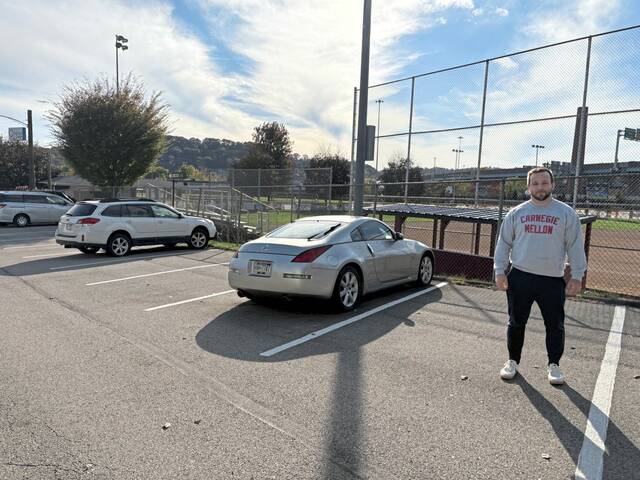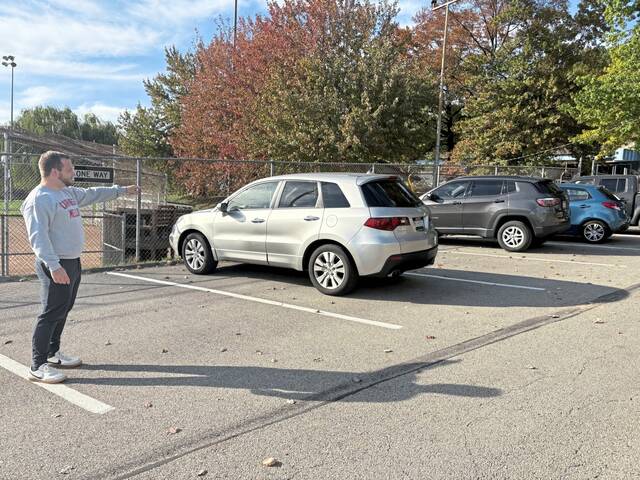Aspinwall expected to change 15 parking spaces at the ball field to resident-only parking
Aspinwall officials seek to change more than a dozen parking spaces by the borough ball field to residential-only spaces in an effort to make it easier for their constituents to find parking during busy recreational days.
However, some residents question whether the adjustment will force visitors to park in front of homes instead of by the fencing along Field Avenue.
The borough recently advertised an amendment to its parking ordinance to change 15 spaces, starting at Fifth Street and going down toward the main entrance.
It is expected to be up for approval at the Nov. 12 council meeting.
“This change will give residents more reliable access to parking near their homes, help keep traffic moving safely, and make it easier for emergency and service vehicles to get through,” Borough Manager Melissa O’Malley said on Oct. 27. “It’s part of our ongoing effort to support residents and maintain the safety and character of our neighborhoods.”
The parking change was not a recommendation of the $50,000 parking study by Walker Consultants. The study was done last year with volunteers in the streets and parking lots as part of its data collection.
Its findings and recommendations were released in February. The report is available on the borough website.
Councilman Mark Chimel said its data was taken into account.
“It wasn’t a direct recommendation of the parking study, but I think a lot of the parking study data supported it as well as other studies that we did outside of the parking study,” Chimel said.
Supplemental data
The portion of Walker Consultants’ report about the seasonal parking impact of the ball field did not include Fifth Street. It was unclear as to why.
It instead listed counts from Field Avenue, Fourth, Third and Second streets. The total number of spaces the paid study listed was 119, with 75 in demand on a weekday and 62 in demand on a Saturday. The remaining spaces were projected to be in demand.
There is also a graphic in the nearly 140-page study that indicates at least 85% of all spaces by the ball field and neighboring streets are often used.
“Walker relied on anecdotal feedback about typical utilization for the baseball field adjustment,” the report stated. “The parking along Field Avenue is reported to be 100% occupied during the evening baseball games or practices. Walker also conservatively assumed the on-street parking on the unit blocks of 2nd, 3rd, and 4th streets was also 100% occupied during the 6 p.m. hour.”
Chimel said he did additional counts during the summer while games were being played.
That information was collected on June 3, a Tuesday, and June 21, a Saturday, when both fields were in use both days.
The report states there are 63 total spots along Field Avenue, 17 total spots along Fifth Street, 20 along Fourth Street, 13 along Third Street south and 12 along Third Street north.
The summer study showed June 3 parking along Field Avenue was at 110% usage, with 69 vehicles. There were 15 vehicles along Fifth Street, 19 along Fourth Street, 10 on Third Street south, and 10 on Third Street north.
The 9 a.m. June 21 data collection showed 62 spaces taken by the ball field, 15 spaces used along Fifth Street, 13 used along Fourth Street, seven on Third Street south, and four on Third Street north.
The additional study also notes June 21 parking at 10 a.m. and notes several Western Avenue blocks, with the 200 to 400 blocks heavily used at all times.
Chimel said it’s important for council to have as much data as possible when making key decisions.
Neither the parking study nor the supplemental work showed whether the spaces were occupied by residents or visitors.
Residents’ perspective
Reserving 15 spaces on Field Avenue for residents would leave about 40 other spaces open to anyone, except for two Americans with Disabilities Act-compliant spaces by the main gate.
Resident David Martincek said he’s lived in the borough for 35 years. He often parks along Field Avenue so his wife can have a space by their Fourth Street home. He sees the change as a positive, provided the police enforce it.
“Parking’s been an issue over the years as the fields become more and more used,” Martincek said. “This is supposed to be resident-only parking here (on Fourth Street), but it’s not always enforced. For the number of people who attend games now, there’s not enough parking spaces along Field Avenue.
“The overflow goes into the neighboring streets. Fourth Street is a particular issue because there’s only parking on one side of the street. It’s only workable if it’s enforced.”
Bill and Jennifer Moore moved to Fifth Street last spring.
Bill Moore said Aspinwall is a very walkable town. He doesn’t see a problem walking a block or two to come home.
Parking at the field also helps on Mondays for street sweeping, he said.
“It’s not that big of a pain to find somewhere else to park,” Bill Moore said. “It’s going to be a pain because I probably have to register my cars with Aspinwall so I don’t get a ticket.”
Jennifer Moore said she believes visitors will park along borough streets if there are no places to park by the field, especially during game days.
“I have mixed feelings because it’s a pretty walkable neighborhood,” she said. “It kind of prioritizes parking for people who might be living within walking distance and not giving spaces for people who actually need to drive here. If grandparents are coming to watch their grandchildren’s baseball game, and they are not residents of Aspinwall, then where would they park?
”They would just park on our street because we’d be the last remaining street (by the ball field) that doesn’t have resident-parking only. It seems like it could make it challenging.”
Parking enforcement
New signage is expected to be installed along Field Avenue, should the parking change pass.
Police would be able to use their license plate readers to determine if vehicles parked by the ball fields are owned by residents. Officers would then use handheld devices obtained a few years ago to issue tickets.
The fine for nonresidents parking in residential spaces is $50.
Resident parking permits are free and available at the borough office.
Residents need to bring their ID and VIN.
Fifth Street is public parking, with nonresidents allowed to park for an hour. There is no time limit for residents.
The portions of Fourth and Third streets by the ball field are resident-parking only.
There are signs posted along the road informing motorists of the restrictions.
Put up a parking lot?
One of the suggestions in the parking study involving Field Avenue is to redesign the recreation site and add a new parking lot.
“Because of the orientation of the existing baseball field, the added lot would not be possible without impacting the field of play,” the report states. “A smaller parking area could be considered, and the borough may want to consider protective netting to prevent vehicle damage if the existing ball field orientation is not first changed per the Recreational Area master plan.”
The new lot would likely reduce the fields from two to one. The lots are projected to cost between $6,000 and $8,000 to create 66 spaces.
Chimel said that the recommendation is not likely to come to fruition, given the increased popularity of Aspinwall tee ball and men’s softball.
The proposed Field Avenue parking change is just the latest attempt to address parking issues in the borough.
Chimel said the borough has worked with local businesses to ensure employees are not parking in residents’ spots. Several shops have leases for employee spaces along Freeport Road.
Michael DiVittorio is a TribLive reporter covering general news in Western Pennsylvania, with a penchant for festivals and food. He can be reached at mdivittorio@triblive.com.
Remove the ads from your TribLIVE reading experience but still support the journalists who create the content with TribLIVE Ad-Free.


